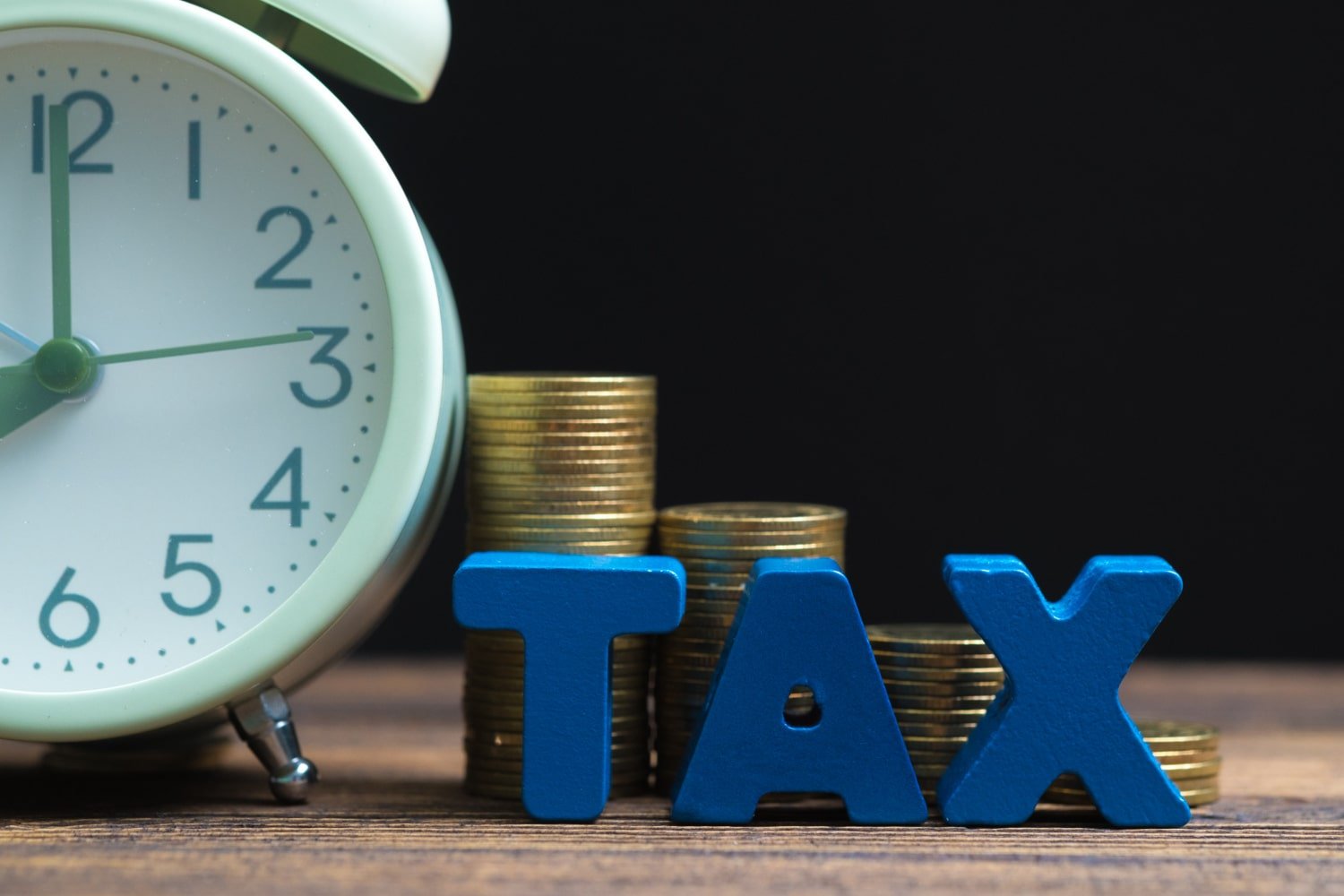If the thought of giving up a significant portion of your property business profits to taxes is leaving you feeling frustrated, worry less – Capital Allowances are here to save the day! By substantially reducing your tax burden, Capital Allowances enable you to retain more of your property business profits, providing a financial boost that is sure to put a smile on your face.
In this guide, we will cover everything you need to know about capital allowances, including what they are, how they work, what types of assets are eligible, types of capital allowances, how to claim them, and common mistakes to avoid along with steps to take to maximise capital allowance claim.
Let’s begin!
Understanding Capital Allowances

Capital allowances are deductions that businesses can claim for certain capital expenditures, such as the purchase of equipment, machinery, and business vehicles.
These deductions reduce a business’s taxable profits, which in turn reduces its tax liability.
Generally, capital expenditures are not fully deductible in the year they are made, unlike operating expenses. Instead, businesses can claim tax relief for these expenditures over several years through capital allowances based on the asset’s cost. This allows them to claim tax relief for the full cost of the asset, even if its market value has declined since purchase.
There are some exceptions to the general rule of claiming capital allowances over several years. These exceptions include the Annual Investment Allowance, First-Year Allowance, and Full Expensing, which provide businesses with the opportunity to claim the full cost of an eligible asset as a deduction from taxable profits in the year of purchase.
Capital Allowances on Property
Capital allowances are an invaluable tax relief tool, especially for businesses operating in the UK property sector.
As a property owner, it’s common to have significant capital expenditures, which is why staying informed about the capital allowances is essential for maximising your tax savings.
Eligibility
The following eligibility criteria must be met for the property business to claim capital allowances:
- The property must be owned by a UK taxpayer, whether an individual, partnership or company.
- The property must be a commercial property.
Qualifying Expenditure
Qualifying capital expenditure are the items that is used in the property business, generally known as ‘plant and machinery’.
Such capital expenditure may qualify for capital allowances, which are tax deductions that can be claimed by property business for the cost of the asset.
Qualifying Properties:
- Offices
- Retail and shopping centres
- Factory and manufacturing plants
- Restaurants
- Nursing homes
- Hospitals
- Hotels
- Banks
- Rental properties – apartments and houses
Qualifying Expenditures:
- Heating systems
- Lighting systems
- Air conditioning units
- Lift
- External solar shading
- Demolition costs
Types of Capital Allowances
There are different types of capital allowances for property businesses in the UK, each with their own specific rules and requirements.
Some major types of capital allowances are briefly explained:
1. Annual Investment Allowance (AIA)
The AIA allows property businesses to claim full cost of qualifying capital expenditure in the tax year the expenditure was incurred, up to a specified limit.
For the period between 1st January 2019 and 31st March 2023, the AIA limit was set at £1 million. This limit has been permanently increased from 1st April 2023.
2. Writing-Down Allowance (WDA)
The fundamental principle of WDA is to provide tax relief for capital expenditures over a period of years, which roughly corresponds to the accounting concept of depreciation.
WDAs are calculated annually based on the decreasing value of an asset, rather than its original cost. To claim WDA, the expenditure on assets needs to be pooled, and the WDA rate depends on the type of pool.
The main pool has a WDA rate of 18%, while the special rate pool has a WDA rate of 6%.
3.100% First Year Allowance (FYA)
FYA enables property businesses to claim a 100% deduction on qualifying capital expenditure in the year the expenditure was incurred.
This means that property businesses can deduct the entire cost of the asset from their taxable profits in the year of purchase, instead of claiming the cost over several years through WDA.
FYA is available for specific assets, including energy-saving equipment and low-emission cars.
4. Structures and Building Allowance (SBAs)
SBAs are given for the construction costs of commercial properties at a flat rate of 3% per year (2% before April 2020) on a straight-line basis for 33 years and 4 months, but at a higher rate for freeport tax sites.
The expenditure must be incurred on or after 29 October 2018 and are available for UK taxpayers for commercial buildings and structures in the UK or overseas.
5. Super-Deduction
The concept of super-deduction was introduced in the 2021 Spring Budget for companies incurring capital expenditure on plant and machinery from 1 April 2021 to 31 March 2023.
This first-year allowance allows a 130% tax deduction, representing a 30% increase from the actual expenditure. For example, a company incurring costs of £10,000 may obtain capital allowances of £13,000.
It’s important to note that the super-deduction ended on 31 March 2023, however you can still claim the allowance for the expenditure incurred from 1 April 2021 to 31 March 2023.
6. Full Expensing
Full expensing is a 100% first year allowance introduced in 2023 Spring Budget for companies incurring capital expenditure on plant and machinery from 1 April 2023 to 31 March 2026.
This replaced the previous 130% super-deduction allowing companies to fully deduct the qualifying capital expenditure from their taxable income in the year it was incurred, rather than spreading it out over multiple years.
7. 50% First Year Allowance (50% FYA)
50% first year allowance, also referred to as SR allowance is similar to the super-deduction above. SR allowance gives first-year allowance at 50% for the special rate capital expenditure on plant and machinery incurred by companies from 1 April 2021 to 31 March 2023.
The 2023 Spring Budget brought some good news for property businesses as the SR allowance has been extended by three years until 31st March 2026.
Property businesses can now also take advantage of this allowance and deduct 50% of the cost of eligible assets from their profits before tax.
Calculating Capital Allowances

Capital allowances are calculated by multiplying the amount of expenditure that qualifies for capital allowances with the applicable tax rate.
The capital allowance computations are prepared for accounting periods and are a trading expense for a property business and should be deducted in arriving at the trading profit figure for the accounting period.
For example, if a property business buys a £10,000 asset with an 18% per annum WDA rate, it receives £1,800 in allowances in the first year, leaving a balance of £8,200. In the second year, the allowances are based on the reduced value of £8,200, resulting in £1,476.
This process continues until the allowances are fully claimed or until the asset is sold or disposed of.
It is important to note that capital allowances cannot be used to create a tax loss, but they can be carried forward to future years to offset against future taxable profits.
Additionally, if a property business disposes of an asset for which capital allowances have been claimed, any proceeds received will be subject to a balancing charge, which will increase the taxable profits for that year.
Overall, capital allowances provide businesses with a valuable tax relief that can help reduce their tax liability and support their financial growth and success.
Claiming Capital Allowances
Capital allowances are not automatically granted unless a claim is made. The general rule is that the claim for capital allowance must be included in a tax return.
Conditions for Claiming Capital Allowances
Almost every commercial property contains plant and machinery that is attached to the building, generally known as fixtures.
For any property purchases since April 2014, two further conditions must be met if the buyer is to obtain any allowances on the fixtures namely ‘Pooling Requirement’ and ‘Fixed Value Requirement’.
Pooling Requirement:
The pooling requirement requires the previous owner (seller) to:
- add the qualifying expenditure to the plant and machinery tool (typically the main pool or the special rate pool), or
- claim a first-year allowance in respect of that expenditure.
However, it is important to note that there is no requirement that allowance should have been claimed on the asset by the seller.
Fixed Value Requirement ‘The Section 198 Election’
The fixed value requirement requires the seller and buyer in a property transaction to sign an election under Section 198 of Capital Allowances Act 2001 for determining the value at which the fixtures in the commercial property are to be transferred.
In simple terms, the fixed value requirement ensures the disposal value used by the seller for the fixtures will always equal the purchase cost of the buyer for the capital allowances purposes. The S198 election must be completed within two years of the completion date of the sale of the property.

So, do you qualify for Capital Allowance?
If the pooling and fixed value requirements aren’t met, neither the new nor future owners can claim plant and machinery allowances for that fixture.
As a result, the qualifying expenditure incurred by the new owner will be treated as nil for the capital allowance purpose. Thus, it’s crucial to conduct a thorough investigation of the capital allowance situation before exchanging contracts.

Disposal Value Statement Requirement

The disposal value statement requirement is not likely to apply frequently as it is only necessary in certain circumstances.
If a past owner has been required to bring a disposal value into account due to making a claim and the sale is at market value because of a cessation of ownership, the disposal value statement requirement applies.
The current owner is responsible for obtaining a written statement from the past owner of the disposal value that was brought into account within two years of the cessation of ownership.
In case where the disposal value statement requirement applies but is not satisfied, then the qualifying expenditure incurred by the new owner will be treated as nil.
Time limits for Claiming Capital Allowances
To make a claim for capital allowances, it is necessary to include the claim in a tax return. The time limit for making a claim is therefore linked to the same deadline for submitting or amending a tax return.
For
Income Tax
The deadline for making a claim is 31 January following the end of the tax year and may be amended for an additional 12 months.
Corporation Tax
The deadline for making a claim (as part of the corporation tax return) is 12 months from the end of the accounting period and may be amended for an additional 12 months.
If HMRC raises an enquiry into the relevant tax return, the time limit for making a claim for capital allowances is extended. Property businesses can therefore amend their claim until 30 days after the enquiry is concluded.
Missed Claims

Missed claims for capital allowances can occur when property businesses do not identify/include all qualifying assets in their claims or fail to claim the correct amount of allowances.
This can result in higher tax liabilities and missed opportunities for tax relief.
It is not possible to reopen computations from many years ago to address missed claims for capital allowances. However, there are no legislative restrictions on when property businesses can include qualifying expenditure into their capital allowance pool, regardless of when the expenditure was incurred.
This means that if the property business still owns the asset at some point in a later year, they can bring the costs into account as qualifying expenditure in that year.
However, the claims will be WDAs only. This provides an opportunity for property businesses to rectify missed claims and potentially reduce their tax liability.
- Recommendation : It is recommended to calculate the qualifying expenditures for capital allowances around the time when the qualifying assets are purchased or installed. This timing ensures that there are no missed claims as the details of the expenditure are new, and accurate records are available to support and maximize the claim for capital allowances.
Disclaiming Capital Allowances

It is possible to disclaim capital allowances, as there is no requirement to claim all the capital allowances available.
Disclaiming capital allowances may be advantageous in certain situations, such as when an individual has low profits that may be covered by their personal allowance for the year.
In these cases, disclaiming some or all the capital allowances can result in a higher tax written down value being carried forward, which can lead to larger capital allowance claims in future years.
Impact of Capital Allowances on Taxes
Capital allowances can have a significant impact on taxable profits of the property business as they allow the deduction of the cost of qualifying capital expenditures from their taxable profits. By reducing taxable profits, property businesses can lower their tax liability and retain more of their earnings.
For example, if a property business spends £50,000 on qualifying capital expenditures and claims an annual investment allowance of £50,000, their taxable profits for the year will be reduced by £50,000. Assuming a tax rate of 19%, this will result in a tax saving of £9,500.
Tax Benefits of Claiming Capital Allowances
Let’s make it abundantly clear that claiming capital allowances is an effective way for businesses to reduce their tax burden and improve their financial position. Some of the tax benefits of claiming capital allowances are:
Reduced Tax Liability
As discussed above, property businesses can reduce their taxable profits by claiming capital allowances, which in turn reduces their tax liability. This can result in significant tax savings for the property business.
Cash Flow Impovement
Claiming capital allowances can also help to improve cash flow for property businesses, as they can receive tax relief on the cost of the asset in the same year it is purchased.
Claiming capital allowances follows the time value of money principle i.e., the value of a pound today is worth more than the value of a pound in the future.
Increased Profitability
Claiming capital allowances can increase profitability by reducing the tax burden on the property business, allowing more resources to be invested in the growth and development of the property business.
Capital Allowances: Are You Underclaiming?
Despite the significant tax relief that capital allowances offer, they remain a poorly understood and underutilised area of tax law. This is particularly relevant to property businesses as they often have plant and machinery assets attached within their commercial buildings, which may be eligible for capital allowances.
Common mistakes when Claiming Capital Allowances
Failing to Identify Eligible Assets
One of the most common mistakes is failing to identify all eligible assets for capital allowances which can result in missed opportunities for tax relief.
Therefore, it’s important to keep detailed records of all fixed assets and to ensure that they meet the criteria for capital allowances.
Failing to Claim Correct Amount
Another common mistake is failing to claim the correct amount of capital allowances. This can happen if the property business does not have accurate records of the asset’s cost or if they do not apply the correct rate of capital allowances.
Missing Deadlines
Missing deadlines can result in missed opportunities for tax relief. For example, if a property business fails to claim the annual investment allowance within the year of purchase, they may lose out on the tax relief.
Failing to Keep Accurate Records
Keeping accurate records is crucial when claiming capital allowances. Property businesses should keep detailed records of all fixed assets, including the cost, date of purchase, and type of asset, in order to ensure that they can claim the correct amount of capital allowances.
Failing to Seek Professional Advice
Lastly, failing to seek professional advice can also result in missed opportunities for tax relief. Tax laws and regulations governing capital allowance can be complex, therefore, we can help you claim the correct amount of capital allowances and avoiding any costly mistakes.
Steps to Maximise Capital Allowance Claim
To ensure that you are claiming the maximum capital allowances and not missing out on any allowance that you are entitled for, you can consider the following steps:
Timing of Expenditure

Timing of expenditure is important to maximise capital allowances as they depend on the amount of capital expenditure incurred during a specific period.
By strategically incurring capital expenditures, property businesses can potentially increase their capital allowances claim for a particular tax year.
It is advisable to make these expenditures earlier in the tax year to allow sufficient time to calculate the capital allowances claim and plan accordingly to optimize tax savings.
Meeting Eligibility

To claim capital allowances, property businesses must meet specific eligibility requirements.
Therefore, it’s crucial to identify all qualifying assets, so a thorough review of the business’s assets can help ensure that no eligible expenditures are missed.
Keeping Accurate Records

Property businesses must maintain accurate records of their capital expenditures, including invoices, receipts, and other supporting documentation to claim capital allowances.
Failure to keep these records up to date could lead to issues with tax compliance.
Seeking Professional Advice

Seeking professional advice is crucial for property businesses that want to maximise their capital allowances.
Tax laws and regulations can be complex and subject to frequent changes, so it’s important to have an expert who can provide guidance on the most up-to-date rules and requirements.
We have a team of experienced tax professionals with deep understanding of the tax laws and regulations and can offer tailored advice to maximise capital allowances.
Conclusion
In conclusion, capital allowances can provide significant tax savings for property businesses that incur capital expenditures. Maximising capital allowances requires careful consideration of the timing and type of capital expenditures, as well as the structure of the business.
By ensuring that assets meet the definition of plant and machinery, keeping accurate records, and choosing a tax-efficient structure, property businesses can potentially maximise their capital allowances and reduce their tax liability.
So, what are you waiting for? It’s time to take advantage of these tax-saving opportunities and give your property business a boost.
Frequently Asked Questions
How does Capital Allowance apply when accounts are not for 12 months?
Capital allowance for an accounting period less or more than 12 months should be time apportioned (except for FYA which is not apportioned). E.g., for an 18-month period, capital allowance would be calculated as 18/12th of usual amount.
Can I claim Capital Allowance in a building?
Capital allowance is not available building used for residential purpose (but capital allowance is available in plant and machineries installed in communal areas).
Regarding commercial properties, an allowance called structure and building allowance might be available at 3% per year.
What happens if my Capital Allowances claim is denied or challenged by HMRC?
If HMRC challenges or denies your capital allowances claim, you may need to provide more evidence. If you can’t resolve the issue with HMRC, you may need to appeal to a tax tribunal. Incorrect or fraudulent claims can result in penalties or legal action, so it’s important to seek advice from a qualified accountant or tax advisor.
Can I still make a claim Capital Allowances if I don’t have detailed invoices?
While having detailed invoices for Capital Allowance claims is ideal, it’s still possible to make a claim without them. You can estimate the cost of assets and make a ‘just and reasonable’ claim based on the estimate, as long as it’s supported by evidence like bank statements or receipts.
Can I claim Capital Allowances on assets used for both business and personal purposes?
If an asset is used for both business and personal purposes, you can only claim capital allowances for the proportion of the asset’s use that is for business purposes.
What is the difference between Capital Allowances and Tax Depriciation?
Both Capital Allowances and Tax Depreciation are ways for property businesses to reduce their taxable income by deducting the cost of assets over time. However, Capital Allowances are a specific set of deductions allowed by the UK tax system for certain types of assets, while tax depreciation is a more general concept that applies to any asset that loses value over time.
Can I claim Capital Allowances on assets used for both business and personal purposes?
If an asset is used for both business and personal purposes, you can only claim capital allowances for the proportion of the asset’s use that is for business purposes.



